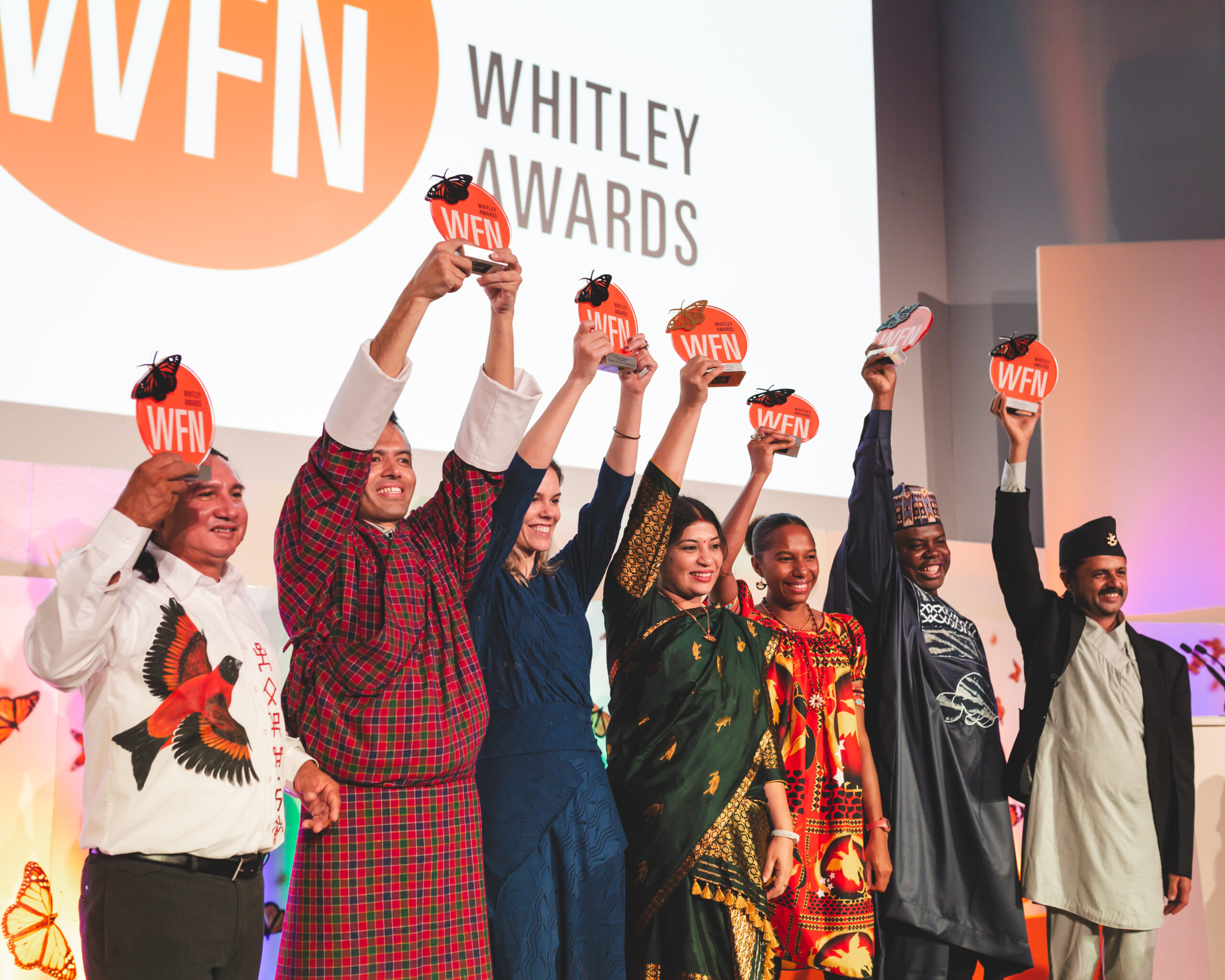
The prestigious Whitley Awards, held annually by the Whitley Fund for Nature (WFN), are a celebration of grassroots conservation leaders. The charity’s flagship prizes – known as the ‘Green Oscars’ – recognise individuals for galvanising their communities in saving some of the world’s most fragile ecosystems and for their innovative solutions to the threats to nature.
This year Studio Silverback supported the awards by making the seven short films narrated by Sir David Attenborough – one for each of the six winners from Brazil, Bhutan, Papua New Guinea, Guyana, Cameroon and Nepal and the ‘Gold’ film for Purnima Barman’s Gold Award. Our films were screened at the Awards presented by HRH The Princess Royal, and are now helping to showcase the incredible work of these dedicated conservationists to the media and wider public.
Alastair Fothergill, Co-Founder of Silverback Films and WFN Ambassador says: “I am very proud to support WFN. Against all the odds, Whitley Award winners always make a real difference to the nature, habitats and local communities they fight so hard to protect.”
Watch our films and find out more about the incredible work being done by this year’s winners below:
Purnima Devi Barman | India – Gold Award
Purnima Devi Barman, a wildlife biologist from Assam, India, who won a Whitley Award in 2017, has been honoured with the £100,000 Whitley Gold Award for her work to protect the Greater Adjutant Stork and its wetland habitat with her team at Aaranyak. Before her intervention, the stork – known as ‘hargila’ in the local language – were thought of as smelly, dirty and unwanted vermin and their numbers had dwindled to an estimated 450 birds in the state. Changing attitudes and galvanising local people, primarily women, to safeguard nests, their numbers have now quadrupled to more than 1,800. Looking ahead, Purnima now wants to double the global population of the bird to 5,000 by 2030, working across the stork’s range in India and Cambodia. Her project aims to grow community-driven conservation initiatives to bolster the number of Greater Adjutant breeding pairs, expanding support of local women to grow the ‘Hargila Army’ of ‘Stork sister’ advocates. She will also establish a collaborative network of WFN alumni, students, scientists and policymakers, providing conservation education and promoting a knowledge exchange programme.
In Guyana, Leroy is protecting the range of the endangered Red Siskin across both indigenous-titled land and state land. Whilst an Indigenous community can create rules and protect the species on their own land, they cannot do this on adjacent state land. With his Whitley Award, Leroy is creating a co-management plan, which can provide opportunities for paid employment for local people (as rangers, or managing ecotourism initiatives), allowing Indigenous communities to receive financial compensation for directly preserving their biodiversity.
Kimbe Bay is an area of staggering marine biodiversity within the Pacific Ocean’s Eastern Coral Triangle. The bay contains 76% (605) of the world’s coral reef and 800 species of fish. This marine region, however, is under threat from overfishing, habitat degradation and climate change. Naomi and her team at The Sea Women of Melanesia work directly with local communities, primarily women, to design and implement Locally Managed Marine Areas (LMMAs) to allow reefs to recover. By providing continuous mentorship and skills development to empower women to take leadership roles within their communities, they hope to start a wave which will encourage other women to drive positive change.
Central Nepal comprises of forest, farmland, glaciers and grassland, providing habitat for 19 species of owl. Recognising they are a low conservation priority in the country, Raju Acharya led on the development of the ‘Owl Conservation Action Plan for Nepal,’ which identifies the major threats to owls as hunting, illegal trade, habitat loss and degradation. His project will train ‘owl envoys’ to protect 500 old trees and install 100 artificial nests, allowing owls space to thrive.
The construction of highways through Brazil’s forests is destroying habitat connectivity, with the associated effects being one of the main causes of declining primate populations. One such highway, BR-174, cuts through Amazon forest including the Indigenous territory of the Waimiri-Atroari people. Fernanda collaborates with this community and the Federal Transportation Agency to install artificial canopy bridges that allow primates to safely cross highways from above, avoiding deadly road impacts. Her project will maintain and monitor these crossings, as well as install new bridges and train 200 people from Federal and State transport environmental agencies to scale wildlife-friendly infrastructure.
African manatees living in the freshwater of Lake Ossa are under threat from an invasive plant species known as giant salvinia, which covers the water’s surface and prevents the manatees from surfacing to breathe. The invasive plant is able to take hold due to increased nutrients in the lake’s water from industrial pollution. In response, Aristide is undertaking a study to showcase how poor management of the watershed upstream affects aquatic ecosystems and livelihoods downstream. His project will provide the foundation for better water resource management, while simultaneously improving the livelihoods of the local people by supporting community-managed fish farming and developing opportunities for ecotourism.
To watch the full ceremony visit the @WhitleyAwards on YouTube.
#SharedFuture #WhitleyAwards
